Ayers House: National Trust has declared war on Environment Minister David Speirs over eviction from Adelaide’s grandest Victorian mansion
The National Trust has upped the ante in its battle with the Environment Minister.
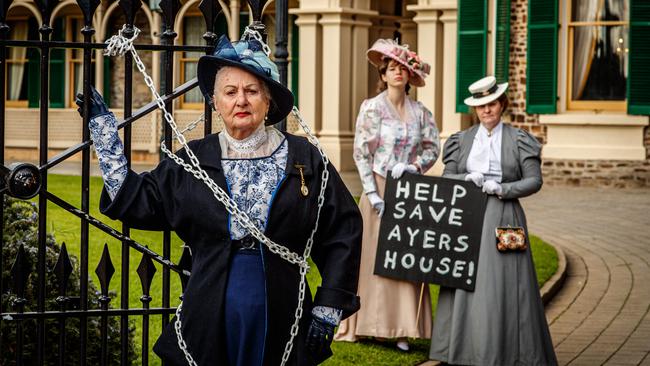
SA Weekend
Don't miss out on the headlines from SA Weekend. Followed categories will be added to My News.
A defiant National Trust has stepped up its battle with state Environment Minister David Speirs, applying to the Magistrates Court to help it delay government moves to evict it from historic Ayers House after 50 years.
The Trust revealed on Friday it had asked the court to help resolve the dispute and “our intention is to use mediation or the court process to resolve our differences … in a constructive and productive way.”
The move is the latest step in a bitter feud which involves allegations of broken promises, misinformation, betrayal, disrespect, underperformance and an unwillingness to collaborate …
■ ■ ■ ■ ■ ■ ■
HISTORY WARS
There’s a surprising breeze here underground in Sir Henry Ayers’ study in the basement of Adelaide’s finest Victorian-era mansion, the result of a clever bit of venting that drops cool air down a large shaft open to the world above.
“One of the city’s first air conditioners!” enthuses Dr Darren Peacock, the National Trust of South Australia’s chief executive, who’s giving me the tour of the North Tce home. No wonder Sir Henry, the Burra copper mine magnate and seven-time state Premier, retreated underground with his family to this spot when Adelaide turned on a scorcher above.
But this breezy draft has no chance of cooling things down at Ayers House right now, where tempers are boiling because of the Marshall government’s decision to evict the National Trust from the building it helped save from demolition, and where for almost 50 years it has run a museum to the Ayers family.
Instead, Environment Minister David Speirs plans to spend $6.6m on renovations and move the government-run History Trust into the building, convinced it can transform the property into a modern, “activated” state cultural institution in ways the NT cannot.
He has put his faith in History Trust boss Greg Mackie, whose varied career has included bookshop owner, Adelaide city councillor, and state government bureaucrat. Mackie describes himself as an “activateur” and “collaborateur” with skills to generate fresh thinking.
“I think they’re good at managing buildings and looking after buildings and holding them in the status quo,” Speirs says of the NT. “But I haven’t seen any examples in South Australia where they’ve really been able to bring buildings to life and tell the history story in a way that the History Trust of South Australia have demonstrated that they’re able to.”
Fighting words. But the NT is not going quietly. It’s started a petition, organised a rally, mounted a media fightback, won political backing from Labor and independents, and consulted its lawyers. It’s also warned that nobody knows what the government intends to do with the historic home, but claims it will certainly mean less public access.
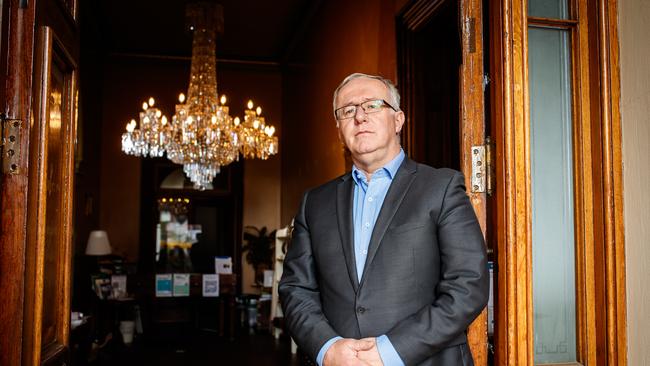
Peacock says the majority of the NT’s 5000 members don’t accept the government’s decision and want to fight it. As SAWeekend went to press, the NT position was that if it was forced out, it wants a year to properly disperse and store its 30,000 museum items – and unspecified compensation for that and for its work on the property.
“I think the plan was, we’ll just hustle you out, and then we’ll do the (renovation) work,” Peacock says. “But we’re saying, we’re not going anywhere. We welcome the work – we think it’s a great thing to invest in the building. But the fact of it happening doesn’t mean we have to get out.”
The NT feels betrayed, Peacock says, pointing to a Liberal election promise that appeared to back its proposal to take over Ayers House from the government and turn it into a major cultural destination.
Back in 2018, the Liberals promised to give $500,000 to the redevelopment of the property by the NT which it said had “developed a comprehensive masterplan outlining its vision to restore Ayers House to its former glory and reinvigorate it as a centre for major events”. The money was provided, but for projects other than Ayers House. Instead, more than three years later, the NT last month received a 31-day eviction notice.
“The National Trust is the most cost-effective manager of heritage places in Australia,” Peacock says. “Everything we do is for the public benefit. Never has any Minister shown such disrespect to this predominantly volunteer-operated organisation.”
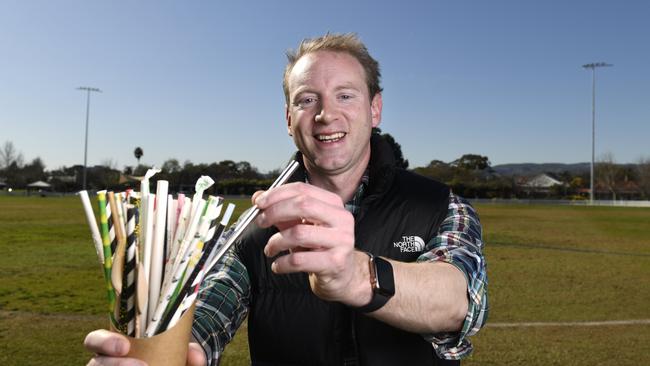
The NT’s state president Deborah Morgan goes further. “I consider that the Trust now has no option but to view the manner in which our tenancy was terminated as an invitation to battle with Minister Speirs,” a feisty Morgan has told NT members.
So how did it come to this? That depends on whose version of history you believe. But what seems clear from numerous interviews, and letters between the parties, is that Ayers House is more a symptom of the problem than its cause.
There’s distrust, personality differences, shattered relationships, and clashes on how best to make heritage relevant in the 21st century. Just to spice things up, the NT is also rallying political support to block Speirs’ legislation to change arrangements governing Martindale Hall in Mintaro, setting for the film Picnic at Hanging Rock, claiming he has possible privatisation plans.
It’s a full-scale heritage war across multiple fronts.
HOME TRUTHS
Sir Henry Ayers was one of the great movers and shakers of colonial South Australia. After feigning carpentry skills to get free passage to the colony in 1840, aged just 19, the law clerk made his fortune from copper as secretary to the SA Mining Association when he bought 45 original shares in Burra’s “Monster Mine”. Profits were astronomical.
Notorious for keeping his workers’ wages low, he had a finger in many pies: a founder of the Bank of Adelaide, trustee of the Savings Bank of SA, chairman of the South Australian Gas Co., governor of the Botanic Gardens Board and Treasurer of the University of Adelaide.
He also helped bring the telegraph overland from Darwin to open communication with Britain, and his support for exploration saw his name, for a while, bestowed on a giant desert rock called Uluru. In politics, he led the government seven times.
The North Tce house was initially just a few rooms and rented by Ayers, who eventually bought it. As his wealth ballooned he built on until he had a Victorian Regency-style bluestone mansion with 40 rooms – now the last of the really grand mansions, with their own upstairs/downstairs social lives, that lined the street. For three decades it was a focal point of colonial life in Adelaide, with balls, dinners, parties – and business deals and political machinations.
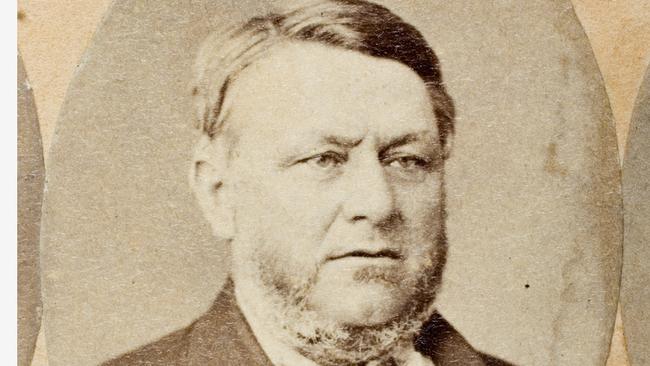
After his death in 1897, the house stood vacant for years, and in the 1920s half its rooms were demolished. From 1929 to 1969 it was home for Royal Adelaide nurses, and in the latter years calls for its demolition prompted NT campaigns to save it. It was Don Dunstan who asked the NT to restore it, and the revamped house opened in 1973, divided evenly into a museum and a separate restaurant (now a commercial catering business, which will remain).
The NT paid peppercorn rent but funded the operation and staffed the museum with mostly volunteers. But in recent years it became clear that a lot more needed to be done to invigorate Ayers House, whose location opposite the innovation centre Lot 14 added to its potential.
That’s why the Liberals initially saw merit in the NT’s masterplan. Peacock, who became chief executive in 2015, wanted to create a broader experience.
“Our vision really was for a place that was busy day and night,” he says. The basement, for example, where Sir Henry kept his cellar, would be perfect for showcasing great SA food and wine. Upstairs, where there are now decorated guest bedrooms, artisans would create traditional wares for sale.
“The idea is that you have all these different markets you can service by having different things, and so different parts of the house would have a different life during the daytime, to the night-time. So, a really elegant tearoom, performance spaces where you have music, the idea of having you know, a bar to just have a drink. We wanted to make it really diverse, use the outdoors a lot more – we’re barely allowed to use the outdoor space.”
For what? Markets, small concerts, he muses. “It’s such a lost opportunity.”
ALTERNATIVE VISIONS
On that Peacock and Speirs agree. “It’s a grand building that’s got a good history but I’m not sure it’s relevant for 2021,” the Minister says. He surveyed his 30-something pals and none of them even knew there was a museum there. “I think there’s a great opportunity to undertake a beautiful restoration of that building to bring it back to life – and to see it as more than a museum that has a few thousand visitors a year.”
But Speirs doesn’t think the NT is up to doing that, despite his initial support for the work. So what changed his mind?
“After a period of time, as Minister, I formed the opinion that the National Trust probably don’t have the capacity to bring that site to life in a creative and exciting way,” he says. “I’ve looked at many of their projects and compared them to the sort of work that the History Trust undertake, and I came to the assessment that I didn’t think the National Trust would be actually able to fulfil their master plan, never mind a bigger vision for the site. And I don’t say that in a disrespectful way … they have managed that property for 50 years, they’ve kept it in … not a great condition, but a reasonable condition. They’ve nursed it along but now it’s time for a new vision.”
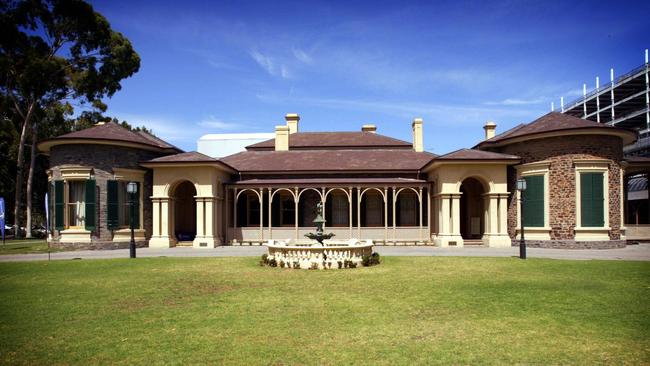
Didn’t the NT have its own “new vision”? Speirs says one of the problems for the NT is that its lease, which in recent years has been a month-to-month tenancy, is set at a peppercorn – token – rent. His advice was that their commercially oriented plan would at times put them in competition with their neighbours who share the building – Ayers House restaurant and catering, which does pay a substantial commercial rent.
“In fact, their masterplan was incompatible with a peppercorn lease,” he says. They would have been up for a very large annual rent. “Now, if they were going to commercialise the site, as their master plan suggested, they might have been able to raise that money … but they weren’t willing to do that.”
That’s disputed – as is his claim Ayers House museum is underperforming. It has “a poor level of visitation”, he says (the NT says 10,000 people a year). “And it’s only open on Saturday and Sunday, which is not up to my expectations. We’ll be looking at significantly expanded public access.” (The NT claims it’s six days a week.)
Another mark against the NT staying is Speirs’ view that it doesn’t play well with others.
“I have seen evidence the National Trust is unable to collaborate with partners,” he says. Recently, it walked away from “an absolutely fantastic project” by the Heritage Council, a government body chaired by Keith Conlon, which produced SA’s heritage tourism strategy.
“They’re supposed to be the peak body for heritage protection in the state,” Speirs says, “And they walked away because it wasn’t on their terms. This is an organisation that appears institutionally unable to collaborate and partner.”
SHIFTING FOCUS
At the same time that Speirs was wanting a revamp of the property, the History Trust was looking for new premises, since it was about to lose its tenancy at the Parade Ground. So as the NT worked up its masterplan, in government the focus was privately shifting – new digs and headquarters for some of its history staff, who will move their offices into the upstairs bedrooms, and the chance to put a focus on the government’s heritage work in a spot opposite two of Marshall’s pet projects, Lot 14 and the mooted Aboriginal Arts and Cultural Centre.
Was it also one in the eye for the NT, which has criticised the government on heritage issues like the proposed demolition of the Waite Gatehouse and destruction of Shed 26 at Port Adelaide? Absolutely not, says Speirs.
“I think it’s an aligning of the planets,” he says. “Just a once in a lifetime opportunity to give an organisation that has a phenomenal track record of telling South Australia’s story, managing historical sites and exhibitions, the SA Maritime Museum, the National Motor Museum, the absolutely phenomenal Centre of Democracy further down North Tce – as well as the month-long history festival. This organisation has runs on the board. It’s got great leadership, and it has demonstrated that it can bring history to life.”
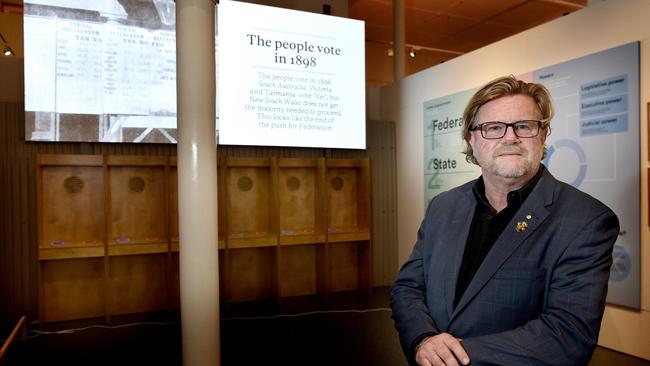
Ayers House will become one of the great cultural buildings on North Tce, he says, and be “far from” just office accommodation. Yes there will be offices in an upstairs area “which is pretty empty or has no real purpose” but it will be the anchor point for many public history events and will remain open to the public.
So, the pressure is on Mackie, who heads the History Trust, to deliver. He has no doubts that he can, and that he has support. “I think that Sir Henry … if he were looking down from the great beyond, he would be very, very pleased to see his home activated in the community interest, in a far more lively way than has been the case in recent times,” he says.
Mackie is a well-connected networker who has won high profile jobs in Liberal and Labor administrations. The former co-owner of Imprints Booksellers in Hindley St has headed Adelaide Writers’ Week, started the newly revived Festival of Ideas, was what he calls “arts supremo” under Labor’s Mike Rann, and is now on his second stint as a city councillor.
He describes himself as a “cultural activateur” and also a “collaborateur”. The last one is something he says the NT leadership haven’t got the hang of.
“The curious thing is that organisations or entities of government like Heritage SA and the History Trust and other collecting institutions, we dialogue, we discourse, we collaborate all the time,” he says. “It is disappointing that the leadership of the National Trust rejects and eschews those opportunities for further collaboration.”
Mackie, like Speirs, thinks the public access to Ayers House will be greater under his plan, seven days a week, although he does say that about 26 staff, not all full-time, will move into the building.
It will be the first permanent home of the History Trust, he says, and a base for lectures, talks, debates and forums. “There are hundreds of historical societies across South Australia and many thousands of people who are enthusiastic supporters of their local history,” he says. “And we look forward to activating Ayers House in a way that gives them a spiritual home.”
But will it still honour the Ayers family? “It absolutely will,” he says. “It won’t be a house museum in the way it’s currently displayed, but it will be a place that very, very much is grounded in the story of the house, the story of Sir Henry’s many contributions.”
For his approach, he cites Dunstan who, in his 1973 speech opening the revamped property, said Ayers House wouldn’t be a museum but provide office space to the National Trust, and also, he expected, Writers’ Week staff. Reception rooms would be used for public functions, the government would entertain there, and it would be a state reception centre of high value and distinction.
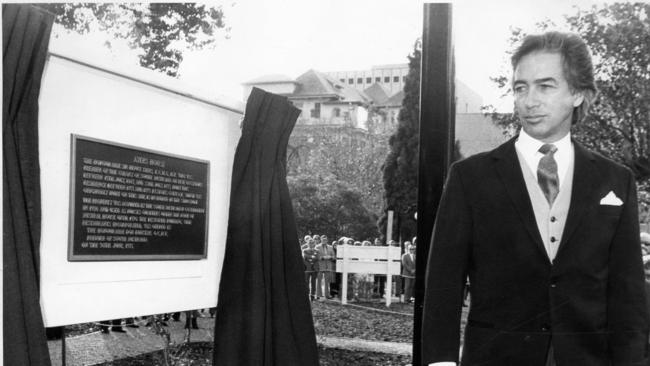
“Contrary to erroneous assumptions, Dunstan never envisioned Ayers House as a house museum,” he argues.
Mackie will find at least one friend at Ayers House. Richard McLeod, who has run the events and catering business for 30 years there, thinks the History Trust will do a good job. “I believe they will be a better fit. They’re incredibly well run. They’re engaging. I think that’s the important thing,” McLeod says.
BATTLE LINES
It was in the grandest of the home’s rooms, the State Dining Room, where a sample of the National Trust’s 5000 state members gathered on Monday of last week to hear what could be done to block the eviction – and how the non-government parties could help.
Beneath a pair of spectacular brass lamps – the first to get gas in Adelaide – and reputedly the finest painted ceiling in Australia, Labor, the Greens and SA Best promised their support.
Labor leader Peter Malinauskus vowed that if the NT was still in the building next March, and Labor won the election, they could stay put. “It’s not right, and it’s not fair,” he said of the eviction, recalling his six-year-old daughter had visited on a recent school trip and come home “quite the authority on the olden days”.
Susan Close, Labor’s heritage spokeswoman, says the eviction is outrageous and the way Speirs has spoken about the organisation unforgivable. It is obliged to stand up for heritage, by criticising government if necessary.
“This is a shoddy way to deal with a very distinguished, longstanding community organisation,” she says. “And it really does sound punitive – maybe it’s got absolutely nothing to do with the way the National Trust has fought back against various decisions by the government, but it feels like it’s related.”
On that front, one of the key issues is the ongoing dispute about the future of Martindale Hall, a magnificent 40-room Georgian Italianate sandstone mansion at Mintaro which was gifted to SA by the University of Adelaide under a charitable trust in 1986.
Speirs says government legal advice is that the conditions imposed block any improvements, even disability toilets, from being installed. He has introduced a bill, now before the state upper house, that he says would protect the heritage values, government ownership and public access but allow for an investor to be a partner that could bring the place back to life – perhaps not the house itself but the outbuildings and grounds.
The NT claims it opens the property up to privatisation by stealth and would allow Speirs to grant a commercial interest a 99-year lease over the property, conceivably reducing public access, and setting a terrible precedent.

An unsuccessful private bid for the property by wine industry figures Warren Randall and Warrick Duthy about six years ago prompted public debate and the NT came up with its own plan to create a Sovereign Hill-type historical experience at the property.
Spiers says the same advice was given to the previous Labor government, and that even the NT proposal would not be allowed under the current legal arrangements covering the house. That is why he wants to change the law, to encourage commercial or not-for-profit bids that would reinvigorate the property.
The local Clare and Gilbert Valley Council backs the idea, warning otherwise the home will continue to decline. But Labor, the Greens and SA Best look set to back the NT.
Early last month, Speirs wrote to the NT’s state president Deborah Morgan to thank her for the organisation’s stewardship of Ayers House and express hope that they could do “some great things together” at heritage sites across SA. He’d already flagged the NT’s term could be up, and this time included an eviction notice requiring it out in 31 days (a schedule he has said won’t be strictly enforced).
Morgan told last week’s meeting she was sure the Trust was being made to pay for its willingness to challenge the government. “Furthermore, I have no doubt that the National Trust antagonised Speirs, by speaking out on Shed 26 at Port Adelaide, the planning and design code, the Waite Gatehouse and more recently Martindale Hall. So in his mind, the National Trust is to be punished.”
Morgan had earlier written to Speirs in a letter smoking with a sense of betrayal. She was shocked at the government’s decision to “renege on its commitments”; dismayed at the Minister asking for the NT to keep discussions confidential, while he made a public announcement; and insistent that any shift would require significant compensation.
Morgan said that the NT had invested the equivalent of $25m in Ayers House over 50 years, and warned, effectively, that the gloves were off and that the Trust would now feel free to fight publicly.

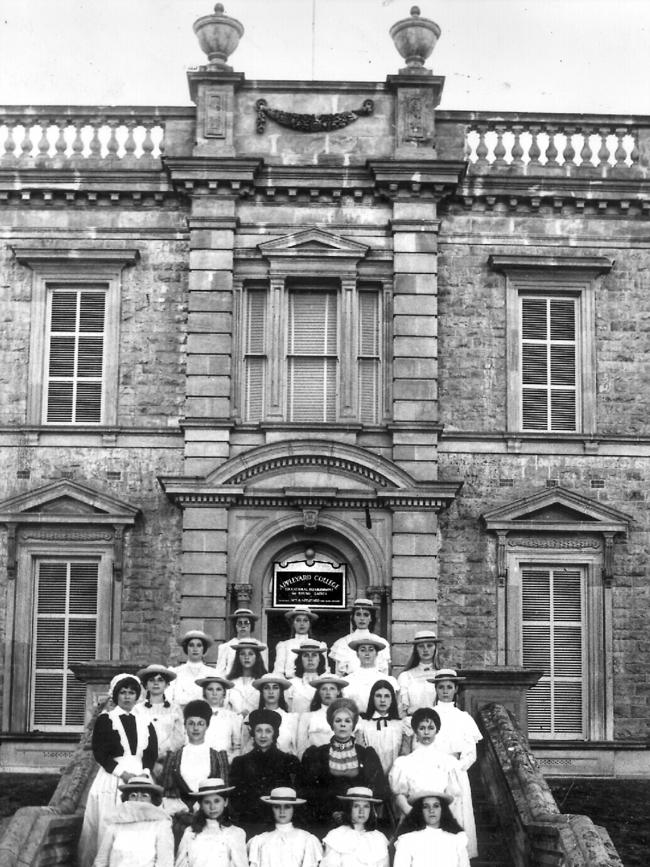
Peacock has been the frontman. His qualifications are in environmental history, arts and cultural management and he helped establish the National Museum of Australia in Canberra 20 years ago. His doctorate is in organisational change in cultural institutions – “I can recognise what is wrong with the institutions in South Australia and it’s pretty endemic”.
He’s keen to rebut the charges against the NT’s performance. “It’s disappointing that the Minister resorts to personal and derogatory commentary about those who challenge him,” he says.
It’s not true the museum is only open two days a week, he insists, arguing it is open six days, although on weekdays the visitors are school groups. About 500 kids went through last month, he says.
As for Speirs’ claim that the masterplan for Ayers House couldn’t have succeeded because it would have required the NT pay commercial rent, that is not necessarily true, he says. The NT was not asked if it could do that and “we’ve never really had a conversation about how to make it work”.
However, it is true that the NT pulled out of the state heritage tourism strategy, despite convening the first national heritage tourism conference in Adelaide two years ago, and winning millions in federal funding for the Silver to Sea Way for a road trip that follows the route of ore from Broken Hill to Port Pirie.
Why then? Peacock says it became apparent that the state strategy lacked ambition and innovation, but those concerns were ignored, and the result was three years and hundreds of thousands of dollars spent by the bureaucracy to produce “a very lightweight brochure”.
Does that suggest the NT doesn’t collaborate? No, he argues, it is highly collaborative and works with dozens of partners across SA and the world, including businesses, councils, art groups like the Art Gallery of SA and the State Opera, and other heritage groups. “Sadly, the Adelaide cultural scene can be rather insular and cliquish so we tend to cast a much wider net,” he says. “We’re a non-government organisation and proudly so. Long-term bureaucrats have trouble understanding that.”
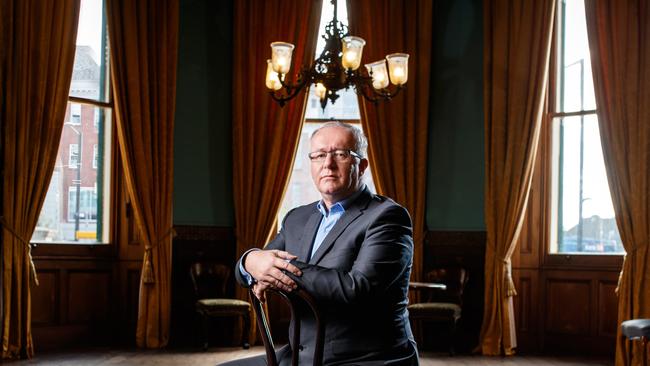
As for Speirs’ praise of the History Trust’s Centre of Democracy, Peacock doesn’t hold back. “It’s a cupboard,” he says. “Its museology (museum practice) is 20 years out of date. So, to have that kind of thrown up as an example of best practice is laughable. It’s really pretty pathetic.”
What about Mackie’s claim Sir Henry would appreciate the History Trust’s plans to activate his old home? “Well, I don’t know what activation means,” Peacock says. “I think it’s a weasel word from bureaucrats. And I don’t presume to be able to channel Henry Ayers, unlike Mr Mackie, who’s obviously all-knowing.”
Exactly what happens next is unclear, although Ayers House will at the very least get a lot more publicity than it’s been used to. Some kitchen work, a lift, offices, airconditioning, asbestos removal, heritage renovations, are all in the mix. So, perhaps, is a court case.
But what is clear is that a lot of the many fittings won’t be staying, or at least not without a fight. So many things have been given under conditions, that the NT says it will need to contact owners to determine what to do with them.
One piece certainly won’t stay, says Peacock – the magnificent crystal chandelier in the foyer as visitors enter the building. That, gifted under strict conditions (see separate story) cannot be left in government hands, he says.
But not all National Trust members are opposed to the changes. Robyn Wight, who has been a board member and a volunteer at Ayers House for 17 years, is hopeful. She thinks the History Trust will do a good job, at least on what she’s heard. Admittedly she sounds disbelieving that 26 staff will be based there.
“I quite understand that the government as the landlord is really at liberty to do whatever they see fit with the grand old lady,” she says. “But I certainly wouldn’t like to see it compromised in any way. Because it does show people how the city fathers lived in the 19th century. And Henry Ayers was quite a visionary and one of the luminaries at the time.
“I don’t think that the story should be lost. So I would look forward to the History Trust carrying on the same sort of activities as the National Trust has done – and it would be quite upsetting if the house were compromised. I don’t think it deserves that.”
NOT CRYSTAL CLEAR
On a trip to Britain in 1859, Henry Ayers ordered a pair of magnificent crystal chandeliers for his new ballroom from F&COsler in Birmingham, whose ornate works included crystal furniture for the palaces of India’s maharajahs.
For years, Adelaide’s elite danced the night away under the sparkling light reflected through about 3000 pieces of cut lead crystal – “a wonder of the age”.
But in 1926, decades after Sir Henry’s death, the two ballroom chandeliers were sold. One, bought by Adelaide City Council, hangs in the Town Hall; the other was bought by John Andrew Tennant Mortlock for Martindale Hall at Mintaro.
In 1965, Mortlock’s widow Dorothy donated it to the trust which was working to protect and eventually restore Ayers House. In 2014 the chandelier was taken apart, cleaned and polished, and reassembled to shine again in 2015. But it won’t stay if the National Trust leaves. Mrs Mortlock had wanted the chandelier “reattached” to where it came from, trust chief executive Darren Peacock says.
“But she made the very specific requirement she didn’t want the government to have it. So if we were to hand it to the government, I think we’d be breaking that request from her.”


